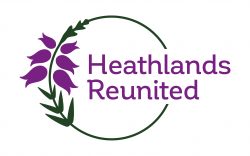Call to help care for heaths as bird numbers soar
April 6, 2022
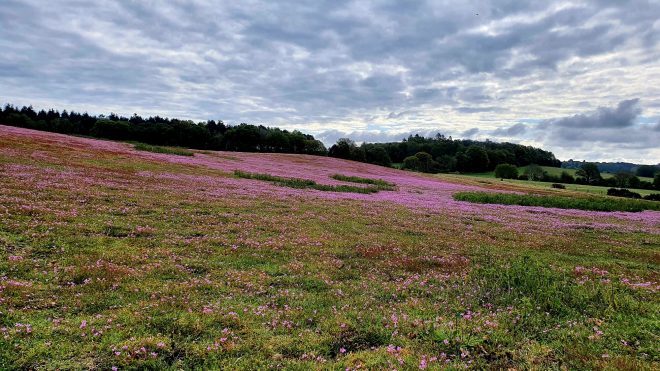
Walkers and pet-owners are being encouraged to play their part to help nature recovery after a resurgence of rare birds on precious heaths in East Hampshire.
A new ecological report on the Wealden Heaths around Whitehill and Bordon has shown that birdlife is flourishing.
The seven heathlands – collectively called the The Wealden Heath Special Protection Area (SPA) and Shortheath Common SAC (Special Area of Conservation) – are internationally-protected because they are breeding sites for three rare bird species: Dartford warbler, European nightjar and woodlark.
Now scientists have found that populations of these three species are higher than at any time in the past 25 years.
Since the designation of the SPA in 1998, there has been an eight-fold increase in the number of Dartford Warblers, with 143 birds spotted last year. Numbers of woodlark have almost tripled, with 58 counted last year, while the Nightjar has seen a steady rise, with 77 spotted in 2021.
The increase is being put down to conservation efforts, community awareness and milder weather conditions. Another potential contributing factor to the rise in bird numbers on the SPA is down to both of Whitehill and Bordon’s SANGs (Suitable Alternative Natural Greenspaces), designed specifically as areas of recreation to relieve pressure on the protected heathland sites nearby. Bordon Inclosure SANG opened in 2016 and Hogmoor Inclosure SANG in 2017. Both sites are managed day to day by Deadwater Valley Trust’s dedicated ranger team and volunteers on behalf of Whitehill Town Council, The Land Trust and Whitehill and Bordon Regeneration Company.
With such encouraging nature recovery, rangers are now calling on walkers and dog-owners to continue doing their bit by sticking to the main paths, keeping dogs on leads.
It comes as ground-nesting bird season begins at Bramshott & Ludshott Commons, Broxhead Common, Kingsley Common, Longmoor Inclosure, Woolmer Forest and Shortheath Common.
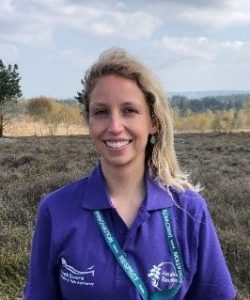 Olivia French, Engagement Officer for Heathlands Reunited, said: “It’s wonderful news that these birds are doing so well – even better than we expected to be honest!
Olivia French, Engagement Officer for Heathlands Reunited, said: “It’s wonderful news that these birds are doing so well – even better than we expected to be honest!
“The next few years are going to be crucial though to really solidify all our efforts and ensure this is a safe haven for these birds. Ground-nesting bird season starts this March and mothers and their eggs, or chicks, are particularly sensitive to disturbance right through until September.
“We’re asking walkers and dog-walkers to do simple things, like sticking to the main path and keeping dogs on leads and out of the vegetation. These protected birds use the cover of the heather and gorse to build nests and can be easily disturbed by inquisitive dogs. Mothers will often abandon a nest and her eggs if disturbed. Look out for these signs as you enter protected sites where these birds are breeding and nesting. ”
And Olivia added: “The resurgence of these birds on these beautiful Wealden heaths is partly down to careful site management, with scrub clearance and conservation grazing over the past few years to improve the heathland habitat. People being more aware of how fragile these sites are and increased use of the SANGs has also helped.
“This is a real success story for biodiversity and we want to continue this upward curve, helping to connect people with nature and caring for it at the same time.”
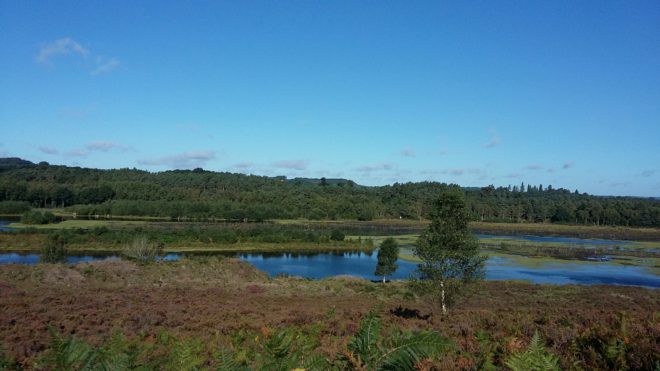
The Heathlands Reunited: Wealden Heaths Strategic Access Management and Monitoring (SAMM) Project, is an inspiring project that started last year and is being funded by East Hampshire District Council and Whitehill and Bordon Town Council, with the support of the South Downs National Park Authority to deliver the scheme. A big part of the initiative is around education and engagement, encouraging people to care for these local heaths and ensure the town’s regeneration protects the biodiversity of these special sites.
A team of seasonal rangers will be tasked with monitoring these sites as well as offering talks, site visits, and pop-up wildlife events to local community groups in the Whitehill and Bordon area.
Cllr Phillip Davies, EHDC’s assistant Portfolio Holder for Whitehill and Bordon, said: “It is very encouraging to see these bird numbers flourishing. We all enjoy visiting these beautiful areas but as we enter ground nesting bird season let’s all take special care to ensure that these rare birds aren’t disturbed.”
If you’re local to Whitehill and Bordon and interested in linking up with the seasonal engagement ranger team and the incredible wildlife which can be found in the area, please email heathlands@southdowns.gov.uk to register your interest.
Dartford Warbler
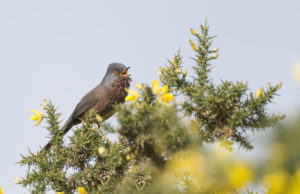
The Dartford warbler depends on mature, dry heath habitats in the UK, and particularly on gorse that is in good condition for surviving cold, harsh winters. It only eats insects and does not migrate for the winter, which means it’s vulnerable to cold weather. The bird makes a grassy, cup-shaped nest, in which it lays three to five eggs. This species can have up to three broods from April to July. Classified in the UK as Amber under the Birds of Conservation Concern 5: the Red List for Birds (2015). Protected in the UK under the Wildlife and Countryside Act, 1981 and listed as Near Threatened on the global IUCN Red List of Threatened Species.
Nightjar
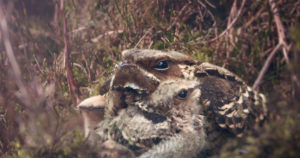
Arriving in the UK in April and May from its wintering grounds in Africa, the nightjar nests on the ground on heathland and in young conifer woods. It’s nocturnal, feeding on moths, flies and beetles. Incredibly well-camouflaged, the nightjar is most easily spotted at dusk when the males display to females, flying around them, wing-clapping and making their distinctive ‘churring’ calls. Classified in the UK as Amber under the Birds of Conservation Concern 5: the Red List for Birds (2015). Priority Species under the UK Post-2010 Biodiversity Framework.
Woodlark
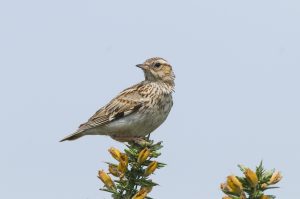
The secretive woodlark favours open, dry habitats with short grasses. This species can be seen all year-round, but is most notable in February and March. Feeding on seeds and insects, woodlark usually nest in grassy tussocks or heather bushes, often digging a shallow scrape. Scattered trees and woodland edges are used as song or lookout posts. Classified in the UK as Green under the Birds of Conservation Concern 5: the Red List for Birds (2015). Protected in the UK under the Wildlife and Countryside Act, 1981.
For more information visit www.southdowns.gov.uk/help-your-heaths
For more information on dog walking visit www.southdowns.gov.uk/take-the-lead/
